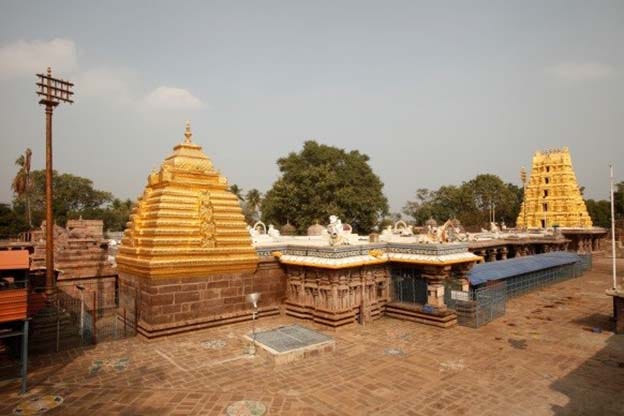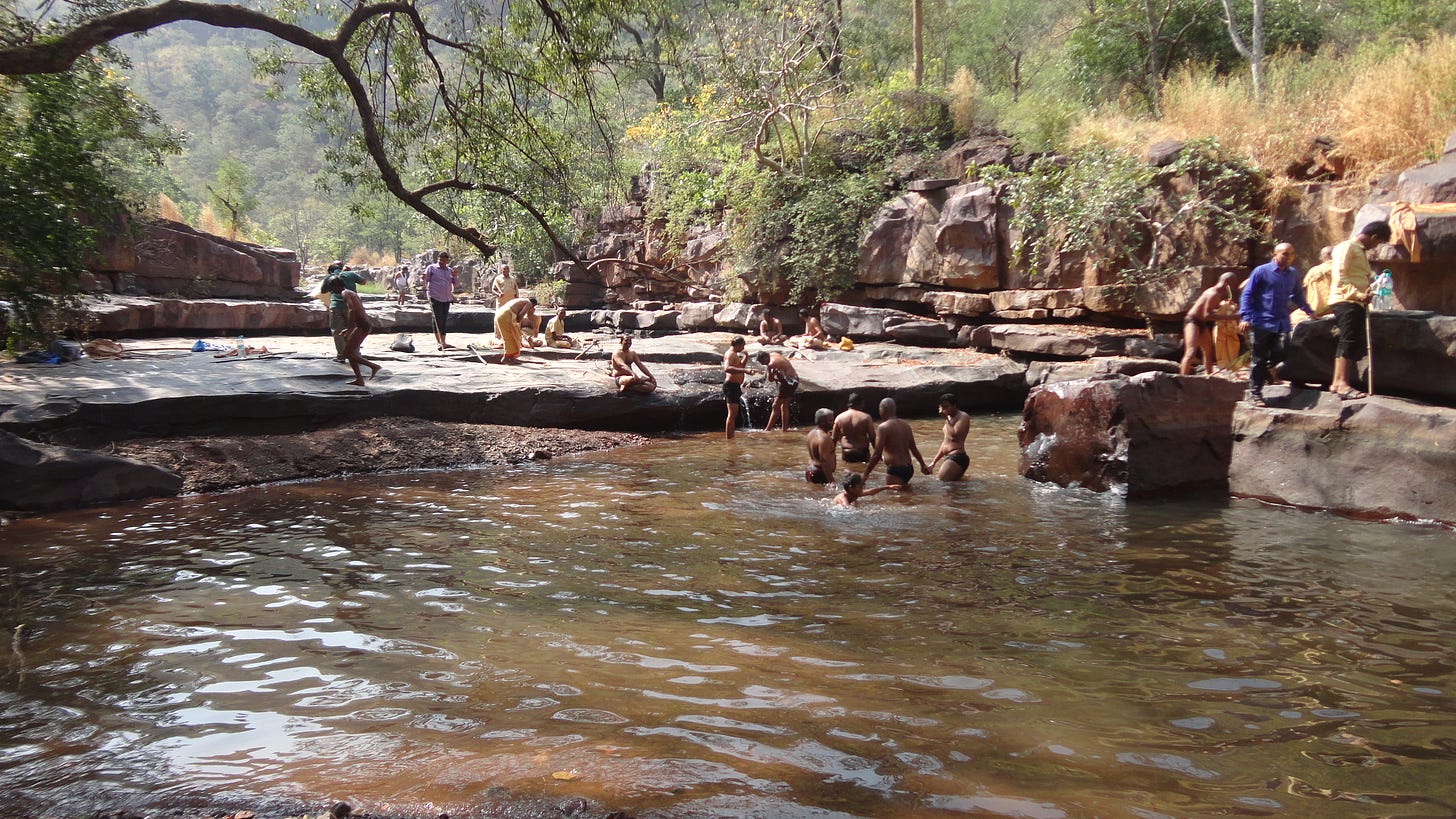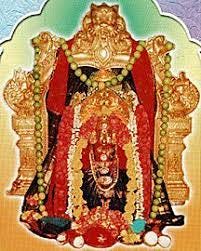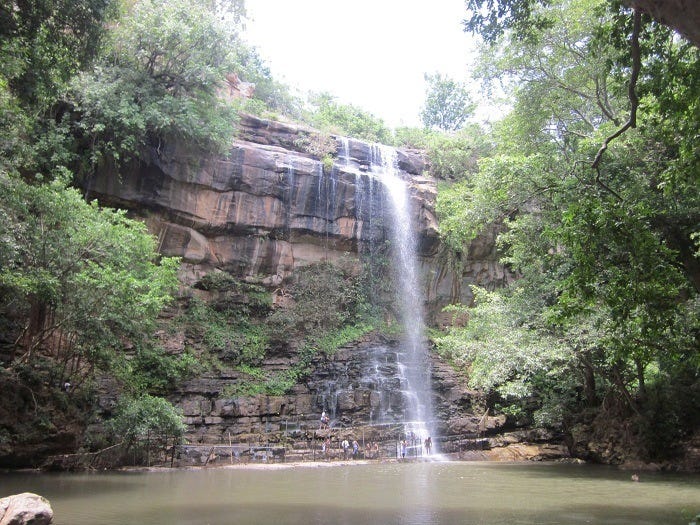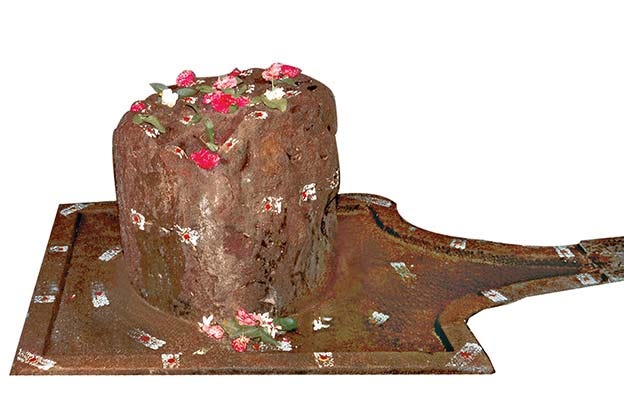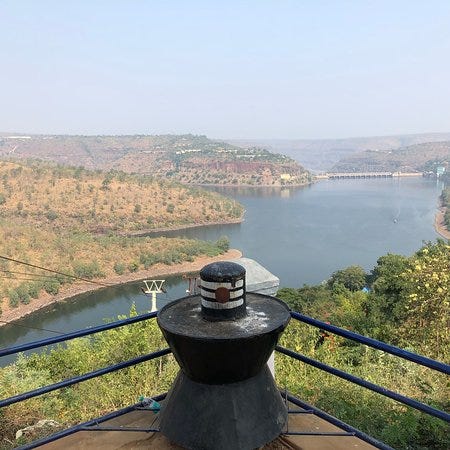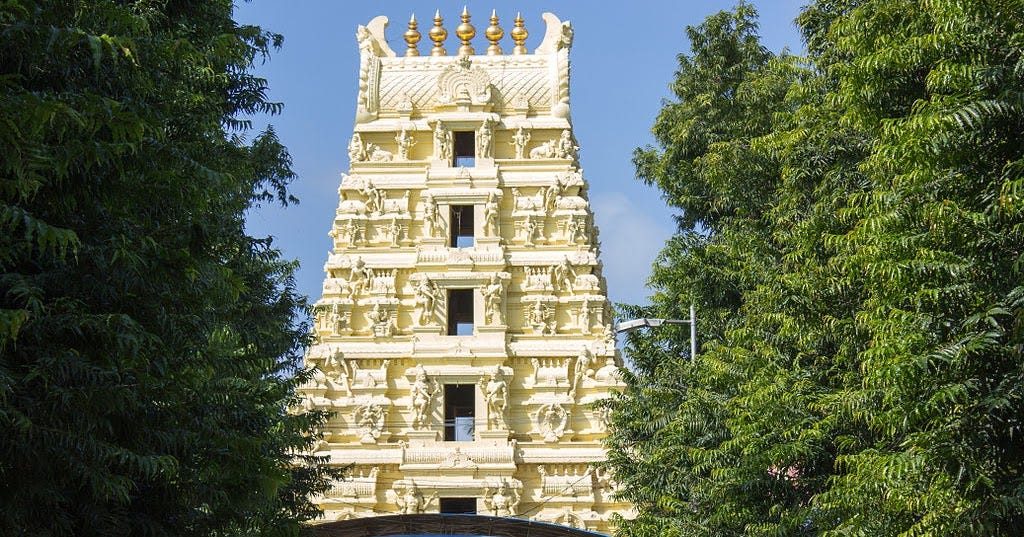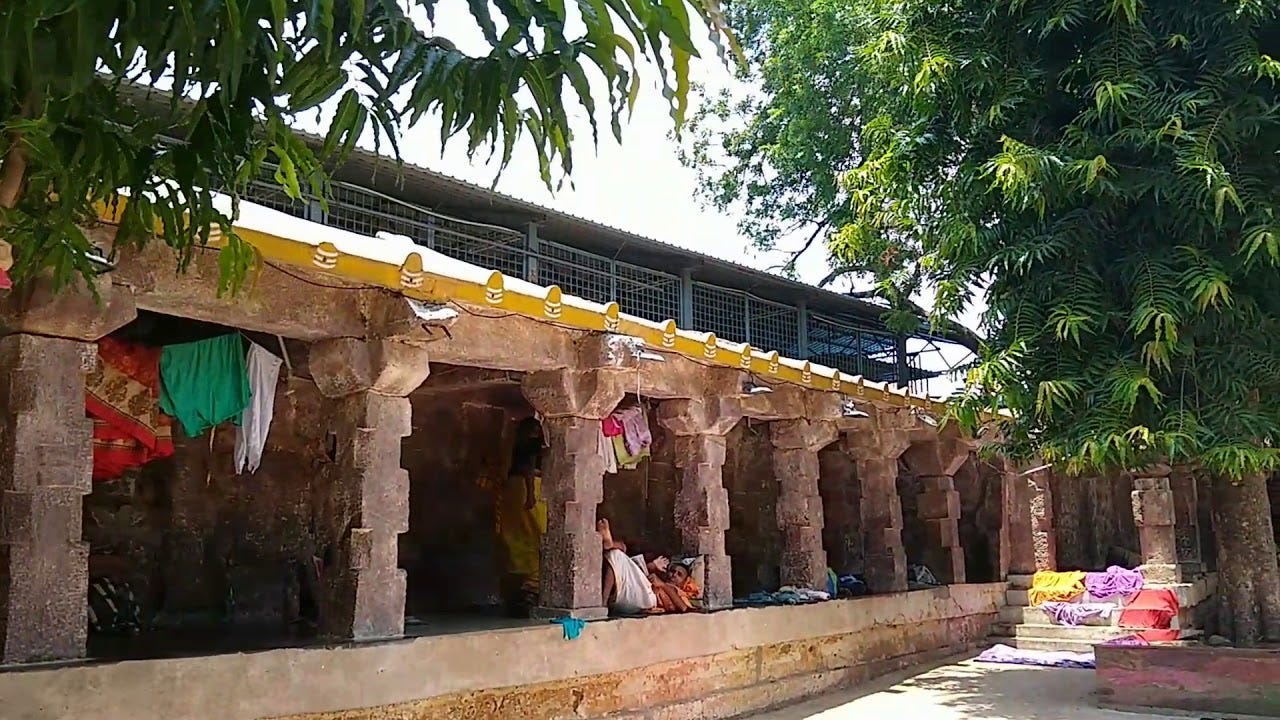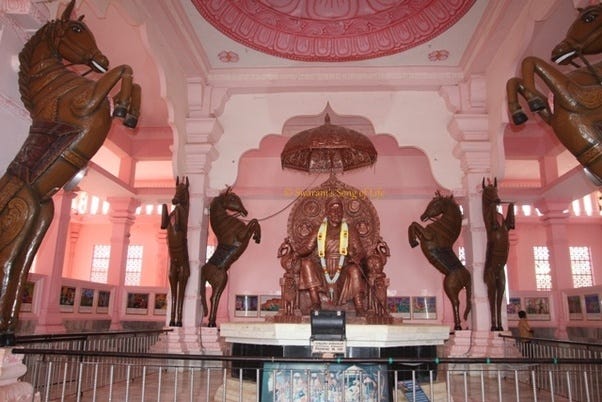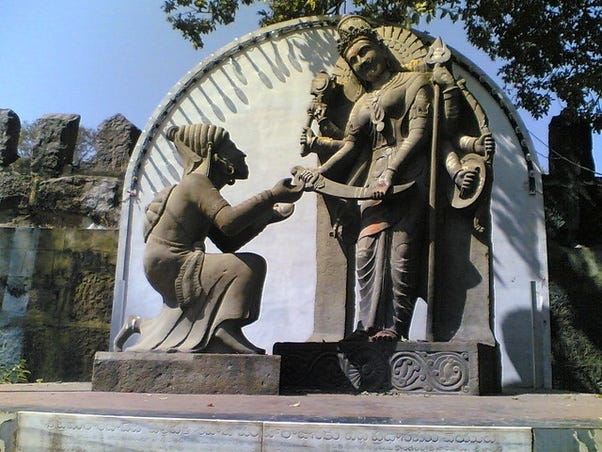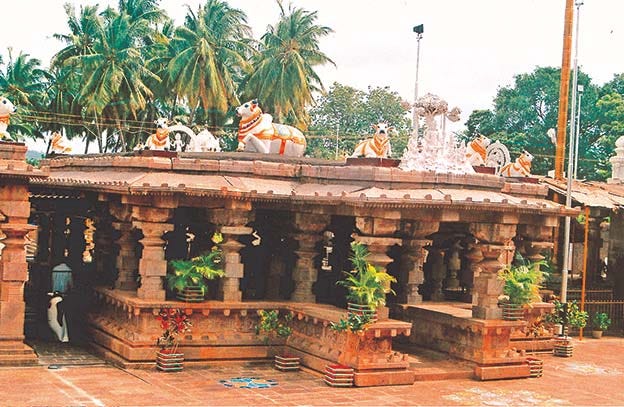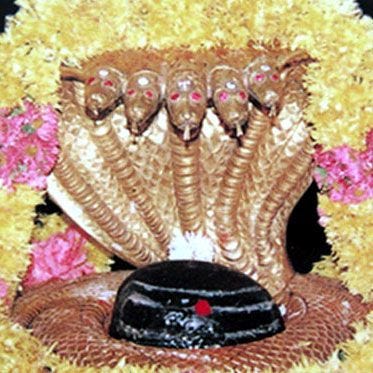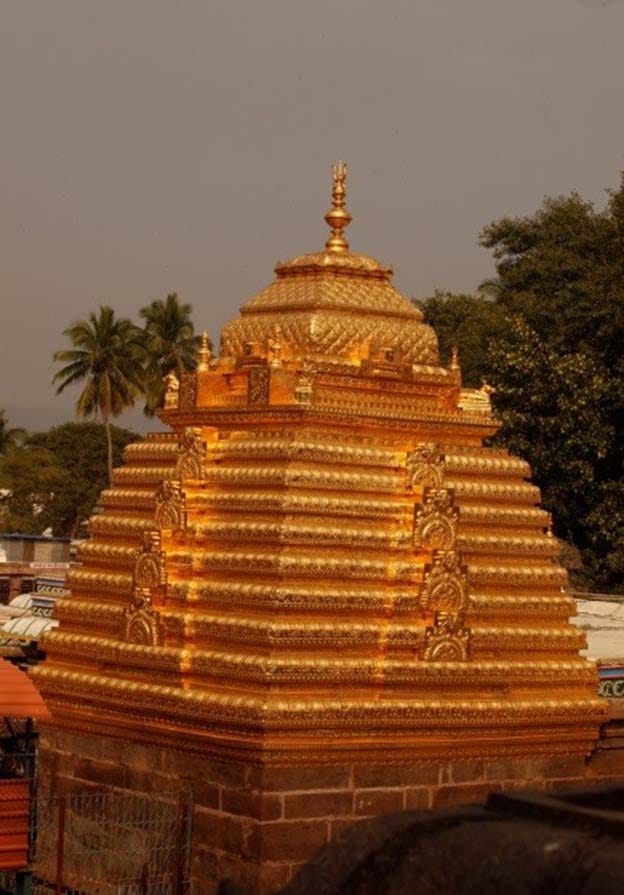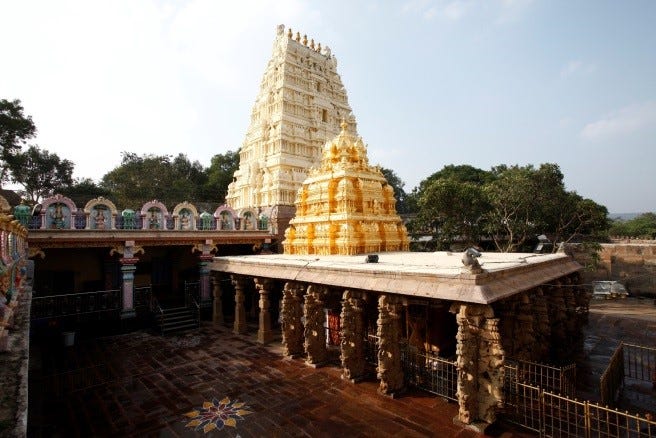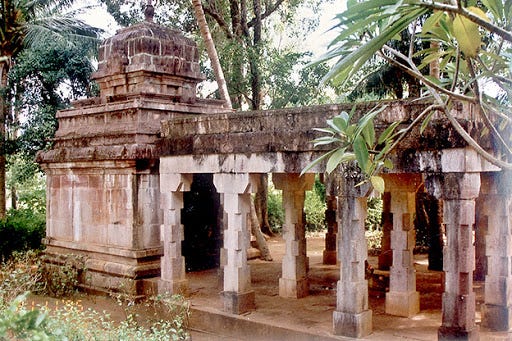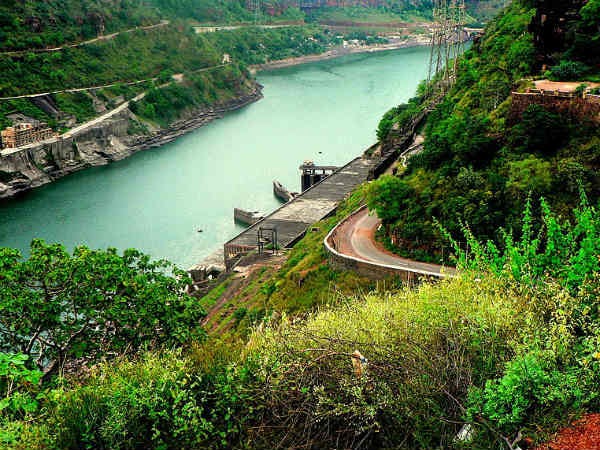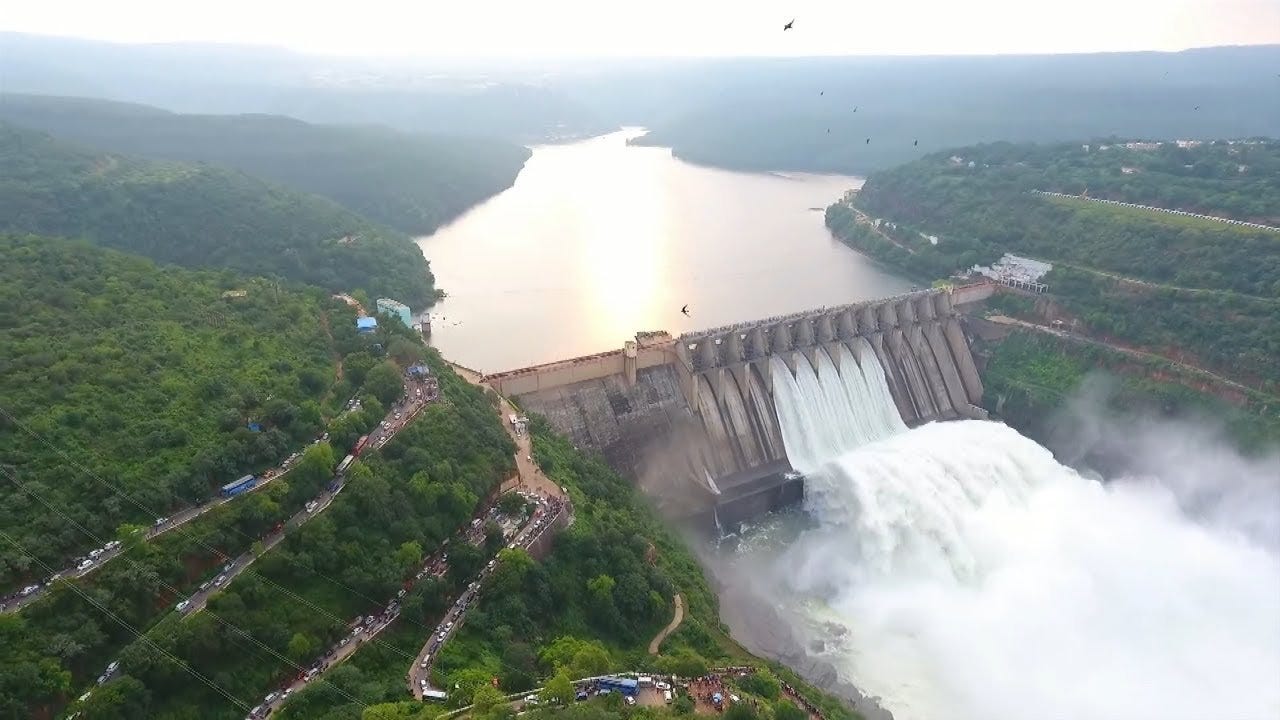Srisailam
Of all the Shaiva Kshetras in Telugu states, Srisailam is significant in so many ways. One of the 3 Shaiva Kshetras, that made up the Trilinga Desha, which was ancient Andhra, along with Kaleswaram and Draksharamam.
Srisailam is the only Shaiva Kshetra that is one of the Dwadasa Jyotirlingams and the 18 Mahashakti Peethams, making it one of the most powerful of all. And it is the same temple were Adi Shankara composed the Sivananda Lahiri. In most of the rituals performed the place and location is specified with reference to Srisailam. It's believed that Hiranyakashipu, did penance to Shiva here, and Ahobilam was where his Sabha was. The Ugra Stambham here is from where Narasimha is believed to have emerged.
Rama along with Seetha is believed to have visited Srisailam during his exile, and consecrated Sahasra Lingas. While Arjuna during his pilgrimage, as well as the Pandavas during their exile, spent some time here. There is a pond called Bheemuni Kolanu, just at the beginnig of the foot route to Srisailam. There is also a tree where Dattatreya is believed to have done penace to Shiva there.
The main Sthala Puranam of Srisailam states that Shakti, took the form of an army of bees(Brahmara), to kill an Asura named Arunasura who had grown too powerful. She settled there as Brahmaramba.
Another version states, that Parvatha, the son of Silada Rishi, did penace to Shiva, and requested him to live on his body, and whoever visits would be blessed with Moksha. He manifested himself as a hill that was called Sri Parvatha, which came to be called as Srisailam.
Another story is about Shiva's devotee Chandravathi who prayed to him daily and would decorate the Shiva Linga, with jasmine garlands. When Shiva appeared before her, she asked him to wear the garland permanently in his head. Mallelu being the Telugu word for Jasmine, Shiva was called as Mallika-Archita-Swamy one worshipped with Jasmine garlands, which in due course of time, became Mallikarjuna Swamy. It's believed that the Mallela Theertham, a beautiful waterfall was where Chandravati offered Jasmine garlands to the Shiva Lingam.
There is also the story of Vriddha Mallikarjuna, where a princess was asked by Shiva to follow a bee, and do penace at the spot where the bee settles. The bee led her to the thick forest, where she began her penace. Shiva appeared in the form of an old man, with wrinkles to test her devotion, and she married him. However when he left her, she cursed him to become a stone, while she was cursed by Parvati to become a bee( Brahmara). There is a shrine dedicated to Vriddha Mallikarjuna in the temple complex at Srisailam.
Also the Chenchus living in the Nallamala forests, around Srisailam believe that Shiva came to live with them as a hunter, married a Chenchu girl. They refer to him as Mallanna or Mallayya, and this story is there on the temple prakaram.
Historically Srisailam first dates back to Pulumavi’s Nasik inscription of 2nd Century A.D. One of the Satkarni rulers Malla Satkarni was named after him. It was later patronized by the Ikshavakus too. The temple was later patronized by the Vishnukundins, who referrred to him as Sriparvata Swamy. It was also patronized later by the Pallavas, Kadambas and Chalukyas.
The Kakatiyas contributed a lot to the growth of Srisailam, as they regulated the temple management. Pratapudra gave a grant of 70 villages to the temple in 1313 AD, while Ganapathideva's sister Mailamadevi is said to have constructed the vimana gopuram.
The Golden age of Srisailam was during the reign of the Reddy rulers. Prolaya Vema Reddy, constructed the pathway to Srisailam, as well as to the Patalaganga here.
Anavema Reddy built the Veera Shiro Mandapam, where Veerashaiva devotees would cut off their limbs to show their devotion to Shiva. This practice called as Veeracharam was however discontinued later. Under the Vijayanagara Empire, Srisailam was even expanded further. Harihara II constructed the Mukhamandapam as well as the Southern Gopuram of the temple.
Sri Krishna Deva Raya on returning from his victorious campaign over the Gajapatis in 1510, built the Salumandapams on the car street here, as well as the Rajagopuram here.
With the decline of Vijayanagara post Tallikota, Srisailam lost it's glory. It was once again Chattrapathi Shivaji Maharaj who restored the temple on his visit here, and bought back it's lost glory. There is a memorial at Srisailam dedicated to Chattrapathi Shivaji Maharaj, worth a visit. Also a statue of him receiving the sword from Maa Bhavani erected in his honor.
The Nandimandapa is located just beyond the Mahadwaram, in square shape. It has 42 pillars with very intricately carved sculptures. Nandi is located in the center on a raised porch. The architecture is of the Vijayanagara period.
The main temple of Mallikarjuna Swamy, is located in the center of the inner courtyard facing east. It is divided into 3 parts- Mukhamandapa, Antarala and the Garbagriha. Mukhamandapa is a closed hall of 16 pillars, built by Harihara II of Vijayanagara Empire, in 1405 AD. The interior has 4 rows of 4 pillars, the central pillars stand on an elevated square. It has a 4 armed Vinayaka made of red stone at one corner called the Ratnagarbha Ganapati.
The Antharala is a smaller and plain structure, having different forms of Shiva. The actual Garbagriha is a 60 feet square structure, and has the main Jyotirlinga of Mallikarjuna Swamy here.
The Vimana built during Chalukyan era is in a pyramidal shape of 9 tiers, and just below the pinnacle you have 4 Nandis in 4 different directions. And just below the purnakumbha is a 8 petalled lotus.
Brahmaramba Temple is located near the Western gopuram, has a mukhamandapam and Garbhagriha. Srisailam is also one of the Mahashakti Peethas, where Sati's tongue is believed to have fallen. Most of the pillars here are very ornate.
There is also a Srichakra installed at the entrance to the Garbagriha of Brahmaramba. It's believed Adi Shankara once saw the rather violent form of Shakti, and in order to pacify her installed the Sri Chakra there. The Brahmaramba Temple has clear influence of Vijayanagara style with very ornate pillars, outer walls. She is represented as Mahishasura Mardini here with 8 hands.
There is small temple dedicated to Sakshi Ganapathi where it's believed Ganesha keeps an account of all pilgrims visiting Srisailam, which many visit. Another small temple at Hatakeswaram where Shiva is believed to have appeared in a pot.
Many Mathas have been associated with Srisailam, at presently only 5 are in existence. These Panchamathas are Ghanta Matham, Bheemasankara Matham, Vibhooti Matham, Rudraksha Matham and Sarangadhara Matham.
Apart from the temple the picturesque surroundings of the Nallamalla Hills, the forests, the Krishna River and the hydro electric project here, make Srisailam a must visit in your lifetime.




